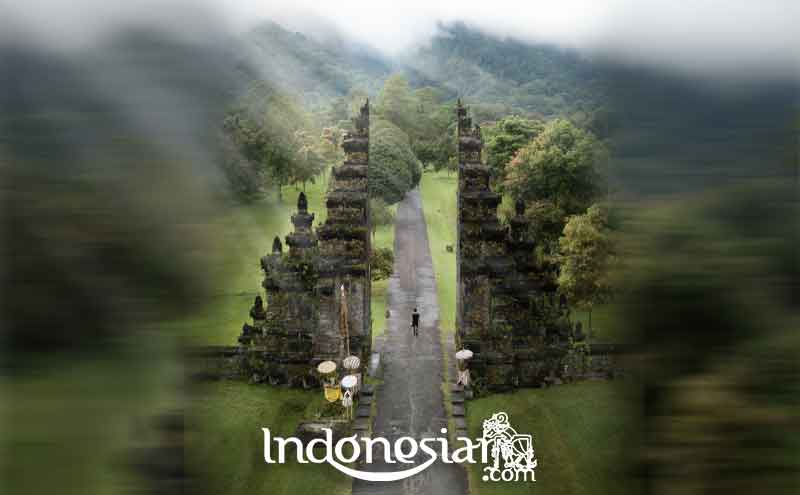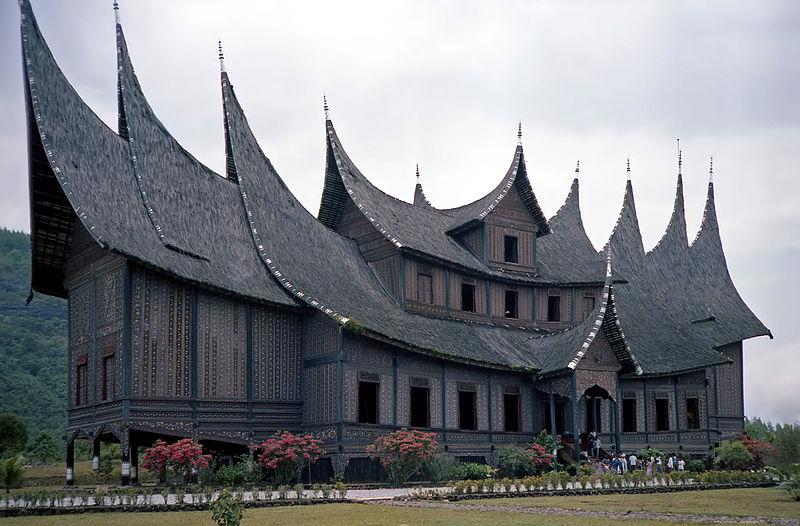Indonesia has several islands that have the privilege of historical buildings. One of these historical buildings is located on the island of Buton. On this 4,408 square kilometer (km) square island there is the world’s largest fortress. Its name is Benteng Keraton Buton or also known as Fort Wolio because it was built on Wolio Hill. This sea hill is located in Baubau City, the capital of Buton Regency.
The area of the fort reaches 23,375 hectares (ha) with a length of around the fort walls reaching 2,740 meters. As a comparison, the area of Borobudur Temple in Magelang, Central Java, is 15,129 ha. Because of its size, the Indonesian World Record Museum (MURI) together with the Guinness Book of World Records in September 2006 named Fort Wolio as the largest defense structure in the world.
Located at the top of a hill as high as 100 meters above sea level (masl) with a fairly steep slope made this place the best defense of its time. From the edge of the fort there is a stunning view of the city of Baubau and the boats going back and forth in the Buton Strait. In addition, in the fort area you can find various historical remains of the Buton Sultanate. The fort was established as the center of defense and civilization for the Butonese people when they faced the Portuguese invaders, apart from protecting themselves from pirate attacks.
The fort is only about 3 km or about 5 minutes drive from the city center. This fort stands around three hamlets including Baluwu, Peropa, and Dete in Melai Village, Wolio District.
On the website of the Ministry of Education and Culture, referring to the designation of this fort as a national cultural heritage on March 4, 2003, Fort Wolio is derived from the word welia which means ‘to clear’. This is because during the construction period, large trees were cut and felled around the hill.
The building design is interesting and has a unique architectural shape because it is made of mountain stones and coral which are glued together with egg whites using a mixture of sand and lime. The height and thickness of the walls are not the same, following the contours of the land or hillside. On steep hills, the walls are up to eight meters high and up to two meters thick. On the inside of the east and south sides there are plaster as bracing or reinforcement.
Buton Palace Fortress has four boka-boka or reconnaissance posts (bastions) in four directions, 12 lawa or gates, 16 small forts (baluara), trenches and weapon systems in the form of badili or long-length cannon made in Portuguese and Dutch. Inside the Buton Palace Fort there is the Masigi Ogena or Grand Mosque, the sultan’s palace (kamali), the tombs of the sultan, and high officials and the traditional Malige house.
There are also settlements with traditional houses which are still occupied by around 700 heads of families (KK). These people’s houses are connected directly to the palace environment through lawa.
There is also the Sulana Tombi, which is a 21 meter high flagpole that was built in 1712 during the time of Sultan Buton Sakiuddin Darul Alam. This teak flagpole sits in the courtyard of the Grand Mosque and is used to fly the longa-longa, the triangular-shaped flag of the sultanate.
In the courtyard of the mosque there is also a giant anchor taken from a VOC merchant ship that sank in Buton waters in 1592.According to a member of the National Cultural Heritage Expert Team (TACBN) Susanto Zuhdi, Buton Palace Fortress is a very rare cultural heritage when viewed from its type and uniqueness because the number is very small throughout Indonesia. The Sultanate of Buton is the owner of this fort.
Based on Regional Regulation (Perda) number 2 of 2010 concerning the Determination of the Anniversary of the City of Baubau and the Change in Writing Baubau, it is stated that the Buton Kingdom was transformed into the Sultanate of Buton on 17 October 1541. This was marked by the inauguration of Lakilaponto as Sultan Buton I with the title Sultan Murhum Kaimuddin Khalifatul Khamis .
The territory of the Sultanate of Buton is quite extensive. Now in the former sultanate, several regencies and cities have been established in Southeast Sulawesi Province, namely Buton Regency, Muna Regency, Wakatobi Regency, Bombana Regency, North Buton Regency, West Muna Regency, Central Buton Regency, South Buton Regency, and Baubau City.
The tour guide at Buton Palace Fortress, Laode M Adam Vatiq, said that the Buton Palace Fortress was built during the time of Sultan Buton III La Sangaji, whose title was Sultan Kaimuddin, who ruled Buton in 1591-1596. Initially, the fort was only built in the form of a pile of stones arranged around the palace complex. The goal is to make a fence between the palace complex and the community village as well as a fortress.
Then during the reign of La Elangi or Sultan Dayanu Ikhsanuddin as Sultan Buton IV, the fort in the form of a pile of stones was made into a permanent building. The construction of the fort was completely completed when La Buke was Sultan Buton VI, who ruled Buton from 1632-1645.
Buton Palace Fort is a leading tourist attraction in Baubau City and has been visited by thousands of domestic and foreign tourists every year. According to the Head of the Baubau Tourism Office Ali Arham, the Buton Palace Fortress is visited by around 300-400 domestic tourists every day in 2019. Meanwhile, the total number of foreign tourists visiting Buton Palace Fortress during 2019 was around 6,000 people and generally came from mainland Europe. Come on, visit Indonesia and get interesting information from Indonesiar.com.





